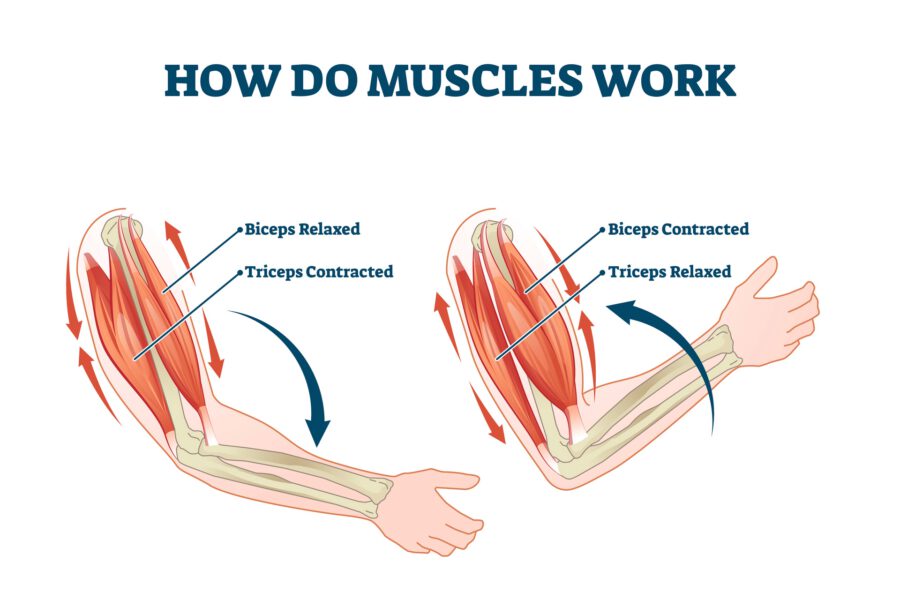What Is Mind-Muscle Connection & How To Achieve It For Gains
The fitness community has long debated whether the mind-muscle connection exists or is just bro science. Perhaps you have already heard a friend or a coach talk about this during your training sessions. But what does it truly mean?
The mind-muscle connection is about the idea that your ability to focus can affect muscle contraction and muscle growth.
It is not a secret that the state of your mind affects the quality of your workout. Likewise, your mood and mental preparedness impact how well you can execute an exercise, and sometimes it is the only gap between successful training and suffering an injury.
However, does being mentally present go beyond your workout experience? Can it actually influence the rate of your muscle growth? And if so, how can we use it to maximize our gains?
This article will discuss the scientific basis of the mind-muscle connection and how you can improve this relationship to optimize your fitness routine.
The mind-muscle connection or internal focus is about concentrating on specific muscle contractions while performing an exercise. It relies more on the psychological aspect of your training and being mentally present during each rep to “feel” the contraction of your muscle.
In theory, paying close attention to the contraction of individual muscle groups allows you to generate more energy on that muscle and recruit more muscle fibers to complete the exercise.
Internal focus also helps prevent the activation of muscle fibers not in use so that you can create more tension in the right muscles.
Many people have experienced the following benefits of practicing internal focus:
- Improved muscle activation
- Improved muscle growth
- Better control in isolated exercises
There’s a literal connection between the mind and muscle. After all, the instructions for your body to move are electrical signals from the brain and are transmitted through the spinal cord to your motor neurons and muscle fibers.
According to EMG studies, researchers found that focusing on the muscles of the pecs and triceps during a bench press increases muscle activation by 5 to 9% compared to simply lifting weights.
Interestingly, another study found that using mind-muscle connection during bicep curls results in a more significant increase in the size of the biceps by at least 5% within eight weeks than regular bicep training.
These studies suggest that paying close attention to the contraction of your muscles during each rep will further improve your gains than simply lifting weights.
Practice more single-joint exercises
Single-joint exercises or isolation exercises are particularly great at enhancing the mind-muscle connection. Studies also show that internal focus is better at activating more muscle fibers during single-joint exercises such as bicep curls and tricep extension exercises.
In addition, practicing internal focus while performing isolation exercises can improve the size and strength of lagging muscles.
Here’s a workout you should try to feel the mind muscle connection:
Your mental preparedness is critical to your workout and improving your mind-muscle connection. Try focusing on squeezing your target muscles rather than lifting the weight to “feel” their contractions more.
If you warm up before your main sets, the blood flow in your muscles increases and prepares your body for the actual lift. This also familiarizes your brain with the movement you are about to do and can result in better recruitment of motor neurons during your heavy lifts.
Lifting lighter weights will allow you to focus on squeezing the muscles rather than simply completing the exercise. Try to aim between 40-70% of your maximum strength (1 Rep Max) when practicing your mind-muscle connection.
Yes, heavy lifting can provide more significant stimulus and help you build muscles faster but lifting lighter weights can also produce the same muscle growth when performed correctly.
Lifting slowly increases the time under tension and improves your mind-muscle connection.
Time under tension is the number of seconds your muscles spend contracting during each repetition.
By making your lifting tempo slower, you’ll be able to feel your muscles contracting and lengthening throughout the range of motion. Try spending 2-3 seconds on each rep.
After completing a set of isolated exercises, such as bicep curls or tricep curls, strike a pose a few times to feel the pump in your muscles.
Posing essentially adds isometric contraction to your already fatigued muscle, which can further stimulate muscle growth.
By visualizing the exact movement patterns before and while performing a specific exercise, you are training your brain to fire stronger signals for more muscle engagement. This will either help you recruit more muscle fibers or improve the quality of the movements.
Learning the basic anatomy of your muscles will help you further visualize how they contract and move throughout the range of motion. Try to familiarize the direction of the different muscles in your body so you can better understand how they move the joints.
Even though the internal focus seems to improve muscle growth, they do not affect strength gain and athletic performance.
Furthermore, the mind-muscle connection only improves muscle activation up to 60% of your 1 Rep Max. This suggests that internal focus does not affect muscle activation better than regular training when challenged with heavier weights.
Internal focus doesn’t train your mind and body to accomplish complex movements. On the contrary, external focus or concentrating on the movement and the outside environment is better for neurological adaptation. Exercising using external focus develops neuronal pathways that enhance brain-body coordination and results in better activation of relevant muscles to accomplish trained tasks.
Take deadlift, for example. An external focus on pushing the ground with your feet will result in better exercise execution rather than focusing your back muscles on contracting or squeezing your butt muscles.
The mind-muscle connection is more beneficial in isolated exercises, particularly in the upper body, like the biceps, pecs, and triceps.
In addition, most scientific studies available are done on inexperienced lifters, and there’s still a need to test the impact of mind-muscle connection on trained individuals in a longer time frame.
Yes, the mind-muscle connection or internal focus exists, and some studies support its effectiveness. Focusing your attention on the target muscle during an exercise can help you activate more muscle fibers and improve muscle growth.
However, if you want to improve athletic performance and other complex movements, you are better off training concentrating on the quality of the entire movement rather than the muscle contraction itself.

